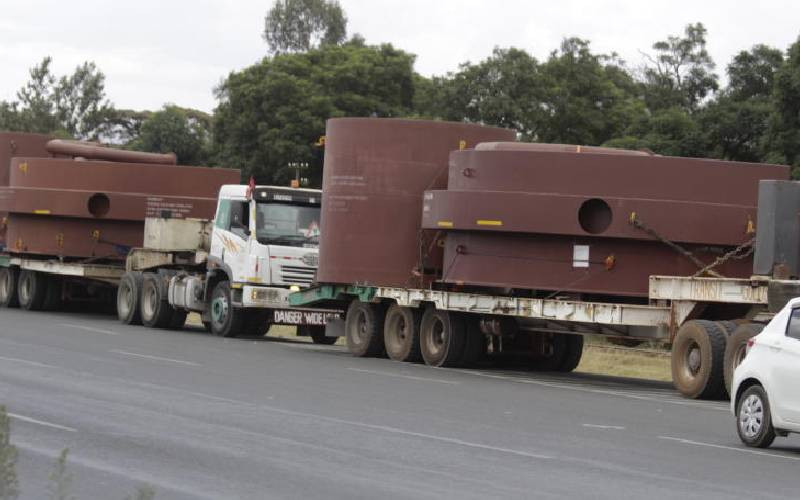Road safety is one of the most critical problems affecting the transport industry world over. Despite widespread measures being taken to control and minimize this problem, road traffic accidents are facing a growing trend, day by day.
In recent years, the on demand transportation service also known as e-hailing services have totally disrupted the transport industry in Kenya and world over. There has been an increase in the number of operators and enlarged coverage for the zones served by the taxi operators.
However, challenges relating to safety, policy and regulation have arisen with these developments. Surprisingly, many players still remain in the dark even as these advances continues to affect the industry!
World Health Organisation (WHO) 2018 report on the global status of road safety highlights that the number of annual road traffic deaths has reached 1.35 million. Road traffic injuries are now the leading killer of people aged 5-29 years globally with the burden excessively borne by pedestrians, cyclists and motorcyclists.
Capacity action is needed to make our roads safer and save lives. Such capacity should be demonstrated through effective institutional leadership within responsible agencies, multi-sectoral collaborations and data systems to measure, target and monitor progress.
The strategic focus should be to create shared obligation between players and the authorities for the better management of all parts of the road traffic system. These can be realised through improved road design, developed traffic management, partnerships with medical service teams, and by policy improvement.
To reduce the incidence and severity of road accidents, comprehensive programs based on a combination of a well-trained, committed, adequately financed, and organizationally integrated industry should be in place.
It is imperative for the ride-hailing Apps to adopt pillars that ensure better compliance with regulations by their driver partners coupled with higher car safety ratings. Partnerships with other agencies like medical and security emergencies also go a long way in ensuring provision of some safety measures.
Enactment and enforcement of legislation on key risk factors are critical components of an integrated strategy to prevent road traffic deaths and injuries.
A combination of enforcement and education on traffic safety should be a priority in the industry. Measures such as infrastructure design - which are often informed by black-spot analysis, vehicle characteristics - particularly compulsory installation and use of safety belts, and driving behavior - such as blanket speed limits in urban areas should be part of the weekly communications shared with drivers- partners by the ride-hailing companies as well.
Personal security while in transport activity is an increasing problem throughout the industry with many cases reported being sexual harassments. In a sense, this is not just a transport problem, but a symptom of a much wider social malaise. Ultimately this is a function of much broader and more complex issues, such as social cohesiveness and the tradeoff between police power and human rights concerns.
Industry players should however, have dedicated customer support team handling high priority cases with a quick turnaround time and good interventions by the security personnel. Vetting of the drivers and their vehicles should also be taken seriously in details before signing them into the platform as a step to ascertain their past security records and have their details for any follow-ups.
As a driver-partner, your vehicle should be a safe and comfortable space for everyone, including yourself. Driver apps also have time fares hence drivers cannot feel tempted to speed and finish the trip quicker to start a new ride. During a trip, if you feel unsafe for any reason as a driver, please pull over and end the trip immediately.
The writer, Ola Akinnusi, is the Country Manager for Bolt (Formerly Taxify)
Stay informed. Subscribe to our newsletter
 The Standard Group Plc is a
multi-media organization with investments in media platforms spanning newspaper
print operations, television, radio broadcasting, digital and online services. The
Standard Group is recognized as a leading multi-media house in Kenya with a key
influence in matters of national and international interest.
The Standard Group Plc is a
multi-media organization with investments in media platforms spanning newspaper
print operations, television, radio broadcasting, digital and online services. The
Standard Group is recognized as a leading multi-media house in Kenya with a key
influence in matters of national and international interest.
 The Standard Group Plc is a
multi-media organization with investments in media platforms spanning newspaper
print operations, television, radio broadcasting, digital and online services. The
Standard Group is recognized as a leading multi-media house in Kenya with a key
influence in matters of national and international interest.
The Standard Group Plc is a
multi-media organization with investments in media platforms spanning newspaper
print operations, television, radio broadcasting, digital and online services. The
Standard Group is recognized as a leading multi-media house in Kenya with a key
influence in matters of national and international interest.








